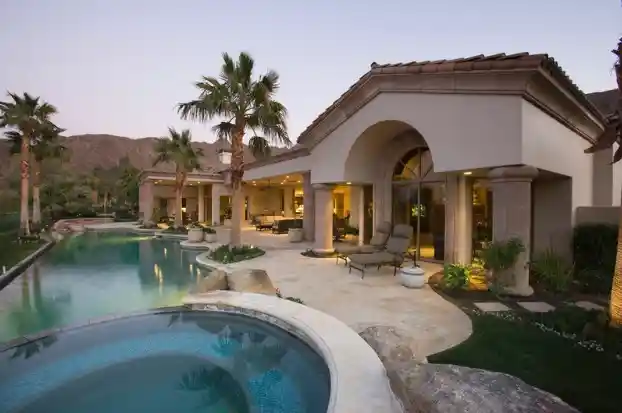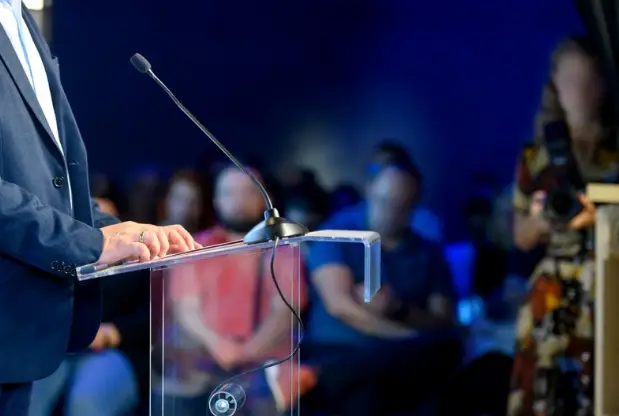https// mobilehomeexteriors.com: Balancing Beauty and Practicality in Mobile Home Exteriors
When planning the exterior of a mobile home, it’s crucial to pick suitable materials that will balance both beauty and practicality. A well-chosen exterior boosts curb appeal, protecting the house from the elements and ensuring the structure remains solid for years.
With so many options available, navigating the material choices can be overwhelming. That’s where https// mobilehomeexteriors.com comes in handy, providing reliable and detailed information for homeowners looking to upgrade or maintain their mobile home exteriors.
Factors to Consider When Choosing Materials for Mobile Home Exteriors
Selecting the suitable material for your mobile home exterior isn’t just about picking what looks best; several important factors influence this decision. By weighing these considerations, you can find a material that fits your needs and enhances your home’s overall value.
Durability
Durability is one of the most important factors. Depending on where you live, the climate can be harsh, with wind, rain, and sun all damaging your home. Choosing a material that can withstand these conditions over time is essential.
Maintenance
Maintenance requirements differ from one material to the next. Some require more attention, such as regular cleaning, painting, or sealing, while others offer the convenience of being virtually maintenance-free. Balancing effort and budget is key.
Energy efficiency
Energy efficiency plays a significant role in material choice as well. Some materials, like fiberglass or brick, offer better insulation, which could help reduce heating and cooling costs.
Budget
Budget is another critical aspect. Different materials have various price points, and balancing cost, appearance, and durability is crucial.
Aesthetics
Aesthetics should be noticed. The material you choose should reflect your style preferences and complement the rest of your home. Some homeowners opt for a more traditional look with materials like wood, while others might prefer the sleekness of vinyl or aluminium.
Top Material Choices for Mobile Home Exteriors
Vinyl
Vinyl siding has long been a favourite for mobile homes due to its affordability, ease of maintenance, and versatility. It comes in various colours and styles, offering homeowners endless design possibilities. Additionally, vinyl resists moisture and doesn’t require repainting or regular treatment like other materials. It only needs a quick cleaning with soap and water to look new. However, it can fade over time in extreme weather conditions.
Wood
Many homeowners love wood for its natural beauty and timeless appeal. Cedar and pine are popular choices that give the home a warm, welcoming look. Wood allows for customization, as it can be painted or stained in various colours. However, wood requires more maintenance, like sealing or painting, to protect it from the elements and prevent rot or pest infestation. It’s ideal for those willing to invest the time and effort to maintain its appearance.
Aluminium
Aluminium is an excellent choice for those who want a lightweight yet sturdy option. It’s highly resistant to rust and corrosion, making it ideal for homes in coastal or humid areas. Maintenance is minimal—just an occasional wash will do the trick. However, aluminium can dent easily and doesn’t insulate like other materials, meaning it might not be as energy-efficient in extreme climates.
Fiberglass
Fiberglass is quickly gaining popularity among mobile homeowners because of its durability and insulating properties. It offers a sleek, modern appearance, mimicking materials like wood or vinyl without the associated upkeep. Fiberglass won’t warp, rot, or rust, making it perfect for regions with fluctuating temperatures. Although it tends to be more expensive upfront, its energy-saving benefits and long lifespan often make up for the higher initial cost.
Brick
Brick is an excellent option for those looking for a material that exudes strength and permanence. It offers outstanding durability and timeless beauty. Brick also provides exceptional insulation, helping to regulate indoor temperatures. Although it requires professional installation and can be more expensive, the long-term benefits of aesthetics and energy efficiency make it a worthwhile investment for many homeowners.
Pros and Cons of Each Material
Each material has unique advantages and disadvantages, so understanding them helps make a more informed decision.
Vinyl Pros:
Affordable and easy to install.
Low maintenance with no need for painting or sealing.
Available in many colours and styles.
Vinyl Cons:
It can fade over time with exposure to extreme weather.
Less durable in very hot or cold climates.
Wood Pros:
Provides a classic, natural look.
It can be easily customized with paint or stain.
Wood Cons:
Requires regular maintenance like painting and sealing.
Vulnerable to pests and rot if not properly cared for.
Aluminium Pros:
Lightweight and easy to install.
Resistant to rust and corrosion.
Aluminum Cons:
It can dent easily.
Doesn’t insulate well.
Fiberglass Pros:
Highly durable and resistant to warping, rot, and pests.
Excellent insulation properties.
Fiberglass Cons:
It is more expensive than some other materials.
Installation might require professional help.
Brick Pros:
Unmatched durability and weather resistance.
Low maintenance and excellent insulation.
Brick Cons:
It is expensive and labour-intensive to install.
Maintenance and Longevity of Materials
The length of time each material lasts and the care it requires vary significantly. Choosing a material with the right balance of longevity and upkeep is essential for a good investment.
Vinyl
With proper maintenance, vinyl can last up to 20 years or more. Its resistance to moisture makes it an excellent option for those living in wetter climates. Maintenance is limited to regular washing to remove dirt and grime.
Wood
Wood requires the most maintenance of all materials, including painting, staining, and sealing, every few years. Despite the high upkeep, well-cared-for wood can last a long time, adding rustic charm to your home.
Aluminium
Although prone to dents, aluminium can last several decades if maintained properly. Washing it regularly helps prevent dirt buildup and ensures that the material remains rust-free.
Fiberglass
One of the most durable options, fiberglass can last over 30 years. Its minimal maintenance requirements—just a simple cleaning now and then—make it a convenient choice for homeowners looking for longevity.
Brick
Brick boasts the longest lifespan of all materials, often lasting over 50 years. It’s incredibly low-maintenance, requiring only occasional cleaning to remove dirt buildup.
Cost Comparison of Materials
Regarding cost, homeowners must consider both the initial investment and long-term value.
Vinyl
Vinyl is generally the most affordable option, with relatively low installation costs and almost no upkeep expenses.
Wood
The initial cost of wood can be high depending on the type chosen, and maintenance costs, including paint and sealants, add to the long-term expenses.
Aluminum
Although aluminium is lightweight and relatively inexpensive to install, its potential for damage might lead to repair costs down the line.
Fiberglass
Although fibreglass’s upfront costs are higher than those of vinyl or aluminium, it offers better insulation, which could reduce energy costs over time.
Brick
Brick tends to be the most expensive option in terms of material and installation costs. However, its durability often justifies the expense over the long term.
Personal Style and Aesthetic Options
Your home’s exterior reflects your personal style. From sleek and modern to classic and traditional, the choice of material greatly impacts the overall look of your mobile home.
Vinyl
Vinyl offers a clean, modern look in a variety of colors and finishes to suit any style.
Wood
If you’re drawn to the timeless appeal of a rustic, natural appearance, wood offers endless possibilities for customization through paints or stains.
Aluminum
Homeowners who want a contemporary, industrial aesthetic often choose aluminium. Its shiny finish and various colours make it a popular choice for modern homes.
Fiberglass
With its ability to mimic other materials, fiberglass allows for creative freedom without compromising on durability or insulation.
Brick
For those seeking traditional charm, brick provides a solid and lasting impression with its timeless beauty and strength.
Conclusion About https// mobilehomeexteriors.com
Choosing the suitable material for your mobile home exterior is a significant decision that impacts not only your home’s appearance but also its durability, energy efficiency, and maintenance requirements. Whether you’re drawn to the affordability and versatility of vinyl, the timeless charm of wood, the modern convenience of aluminium, the strength of fiberglass, or the durability of brick, each material has its unique set of benefits and drawbacks.
Carefully consider factors like durability, maintenance, cost, and aesthetic appeal to make an informed choice that fits your lifestyle and budget. No matter your choice, upgrading your mobile home exterior is an investment that will enhance your home’s appearance and value for years to come. If you also want to read about MyFastBroker Forex Brokers then visit that post.
FAQs
Which material is the most durable for mobile home exteriors?
Brick is the most durable option, often lasting over 50 years with minimal maintenance. It provides strength, insulation, and a classic aesthetic. Its durability makes it resistant to extreme weather, pests, and rot, essential for long-lasting mobile home exteriors.
What is the most affordable material for mobile home exteriors?
Vinyl is generally the most affordable material for mobile home exteriors, both in terms of initial cost and maintenance. It’s lightweight, easy to install, and available in various colours. Thus, it provides a cost-effective option without compromising durability or aesthetic appeal.
Which material requires the most minor maintenance?
Fiberglass and brick require the most minor maintenance, with only occasional cleaning. Their durability helps reduce upkeep, making them practical choices for those who avoid extensive maintenance, especially since they resist mould, pests, and environmental damage over time.
Can I install exterior materials myself?
Some materials like vinyl and aluminium can be installed as DIY projects, saving costs for handy homeowners. However, heavier materials like brick and stone are more complex and typically require professional installation to ensure proper safety and durability in the long term.
How do I maintain wood exteriors?
Wood exteriors need regular painting, staining, and sealing to protect against moisture, pests, and rot. These treatments are crucial in preventing damage from weather exposure, which can cause cracking or warping, helping preserve the natural beauty and longevity of wood exteriors.






